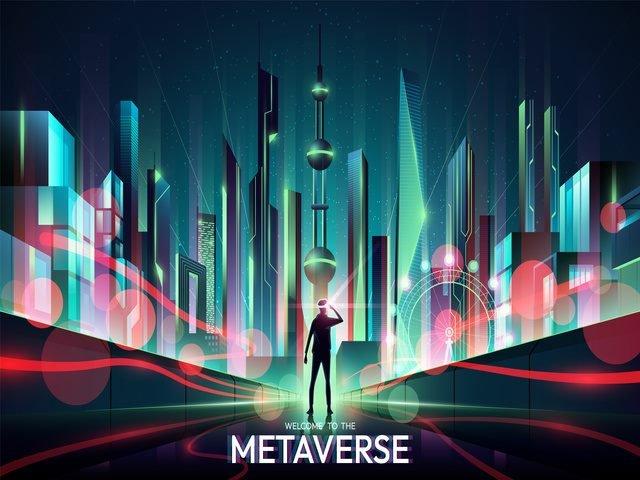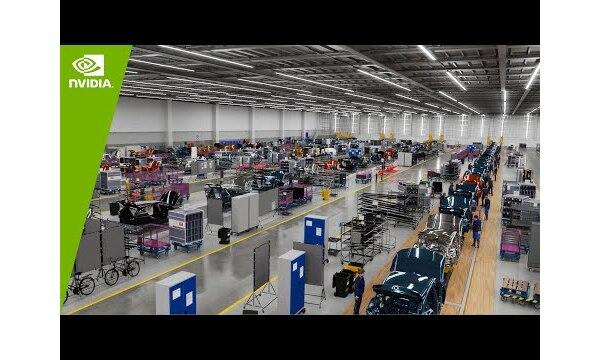
Designing, Optimizing and Operating the Factory of the Future
For hedge fund manager Jim Cramer, you're more likely to find promising investment opportunities in the “metaverse of industry” than in the “metaverse of fun.”
The metaverse of industry is where you design simulations that test the operations and workflows of physical assets, like buildings, planes, robots or cars, and analyze how to maintain them long after creation. The metaverse of fun, on the other hand, is where you shop, test outproducts, meet people and, mostly, entertain yourself.
The first category uses “digital twins” for virtual representation of physical assets, with most companies using CAD to build physically accurate 3D digital worlds. The second category uses avatars for virtual representation of your ideal self, allowing anyone with basic equipment to act out their random fantasies.
Tech Leaders Call Metaverse ‘Next Big Thing’
Facebook founder Mark Zuckerberg called the metaverse our domicile of the future; that immersive virtual worlds will “become the primary way that we live our lives,” while Bill Gates predicts most office meetings will switch from 2D video calls to 3D worlds with digital avatars within three years.
This cutting-edge technology, which tech corporations hype as the “Next Big Thing,” is a blend of virtual and augmented reality that transports you to a fictionalized world where you can act out your dreams in gaming, entertainment and social network forums. All you need is a $300 to $400 VR or AR headset for a 360-degree immersive experience.
You can also enter existing metaverses, such as Roblox and Minecraft, from your computer, tablet or phone for a “regular” non-360-degree experience.
More recently, brands like Nike and Walmart use the metaverse for marketing or commerce. In Nike’s Nikeland, for example, Roblox users dress their avatars in branded gear. In Walmart’s VR shopping demo, headless users peruse shelves and load carts with groceries.
Related Article: Where the Metaverse and Digital Workplace Meet
The Metaverse of Industry
According to Jim Cramer, it’s better to invest in the metaverse of industry than the metaverse of fun. “Think,” he told CNBC, “of the [real importance of the] metaverse as an industrial play, not just as a fun play. The metaverse of industry is exciting because there’s an application.”
In the last few years, a panoply of companies across industries adopted the metaverse to create their dream companies. Using VR-based collaboration tools like NVIDIA’s Omniverse, manufacturers test for safety, labor costs, inventory control, overhead customization and speed of production before committing to physical representation.

As Rev Lebaredian, Vice President of Simulation Technology and Omniverse Engineering at NVIDIA told CMSWire:
"We built Omniverse to enable the virtual worlds we build to test, train and validate AIs. For example, DRIVE Sim for autonomous vehicles, and Isaac Sim for robots. The NVIDIA Isaac platform…accurately simulates robots and their behavior in a particular environment [which] allows factory managers to arrive at optimal designs that deliver on productivity… NVIDIA’s Fleet Command comes into the picture after the factory is initially designed. It allows the factory manager to securely deploy and manage all of the AI software at the heart of an AI-based factory or warehouse. So Isaac and Fleet Command work to design and then manage the 'perfect' factory."
One company that regularly uses NVIDIA to design its simulations is Siemens Energy. Not only does Siemens have its CO2-neutral Germany-based Siemenstaadt Squareplotted on 3D canvas, but this leading energy company regularly uses the omniverse for improving and maintaining machinery and divisions of labor.
Case in point: Over the years, Siemens Energy has had to spend unnecessary time and money on their steam turbines, inspecting and maintaining them for corrosion and possible internal damage.
Now Siemens uses immersive 3D CAD modeling to design 5G prototypes of their turbines so that their engineers can inspect the internal integrity of the devices and predict failures without dismantling the devices and disrupting production.Siemens concluded that its digital twins reduced downtime by 70%, saving the industry $1.7 billion.
Other case histories include Microsoft, Unilever, Boeing and BMW, each of which uses different OS platforms like Rabbit or Pine to collaborate in real-time 3D, revolutionizing their planning processes and boosting agility.
Related Article: There's More to the Metaverse Than Facebook and Microsoft
How Do Companies Leverage VR Tools?
Top tech companies, like Siemens Energy, use VR-based tools, notably NVIDIA, in ways and for purposes that include the following:
Manufacturers drag-and-drop assets in their real-world simulations to identify how to become more efficient, productive or cost-effective in real life.
Team members collaborate on discussing, testing and analyzing the 3D model before implementing results in the physical world. The process not only cuts down on disagreements but also expedites the product life-cycle.
Lebaredian told CMSWire, “Omniverse enables our globally dispersed teams of 3D designers, artists, reviewers to work together in real-time across leading software applications.”
A more detailed omniverse landscape reduces the margin of error when blueprints are translated into the physical world. Fewer errors means lower churn rates for customers and lower return rates for defective products.
Customers who access a company’s 3D-rendered supply chain see how its products are built, distributed and sold. Business transparency boosts employee morale while enhancing the company’s reputation among stakeholders.
The Bottom Line
As Cramer told CNBC, “A company can eliminate about a third of its costs using the [industrial] metaverse.”
It's a transformational medium where organizations can answer their questions of “what-ifs” and “how-tos” to improve their products, assets and more in scalable, sustainable and safe ways. Put differently, this technology allows companies to create a world devoid of error, before they commit to costs in the real world.
As Matthias Rebellius, a member of the Siemens Managing Board and CEO of Smart Infrastructure, said in a news release, "The most efficient way is to build a building twice. You build it once digitally, simulate it and then optimize it. Then you build it properly."
In that way, the metaverse is the industry's closest solution to the ultra-smart, sustainable city of the future.
}})